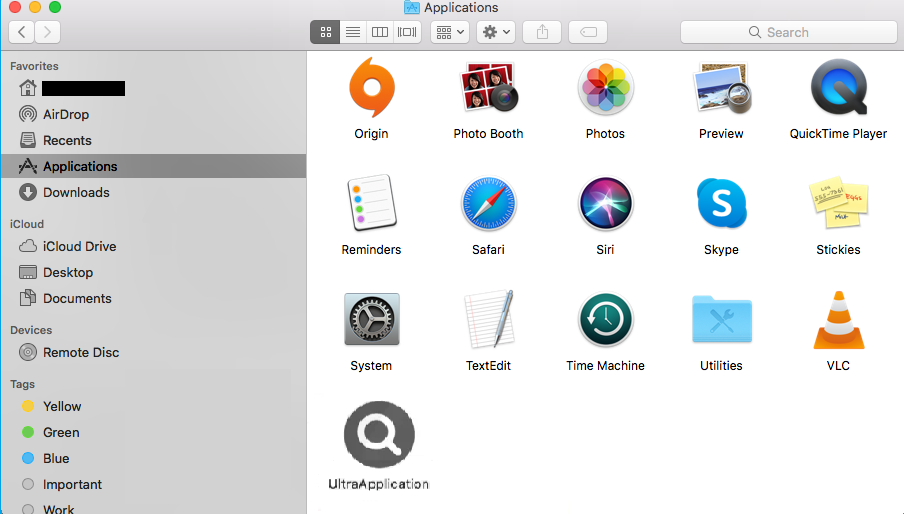UltraApplication is an adware infection from the AdLoad adware family. It’s a minor infection that mainly focuses on showing ads.
All adware infections from the AdLoad adware family are more or less identical to one another. They are very easy to identify because they appear in the Applications folder. If you open Finder and click Applications, you will see UltraApplication among the installed apps if the adware is present.
The purpose of adware is to expose users to sponsored content and ads. When adware is present, you will notice an increase in ads, as well as get redirected to seemingly random websites. While this is annoying to deal with, it makes it easier to recognize when adware is present.
While adware is annoying to deal with, it’s not directly harmful to the computer. However, it’s not harmless either because the ads it spams can be dangerous. The ads you see and sites you get redirected to can be dangerous in the sense that they may promote scams and hide malware.
One common scam that adware shows is fake virus alerts. These alerts are made to resemble legitimate notifications about infection but they’re not very convincing. The virus alerts claim that the computer is infected with serious malware and needs to be cleaned immediately. A phone number is displayed in these fake alerts, supposedly for tech support. If users call the number, they will be connected to professional scammers. These scammers usually pretend to be support technicians working for Apple or Microsoft depending on the users’ device. To supposedly clean the device from malware, they request remote access to the device. If granted, scammers will pretend to fix the computer while also stealing personal files/information. It’s also pretty common for them to set a password for the computer, unbeknown to the user. At the end of this fake malware removal session, users are asked to pay at least a couple of hundred dollars. Paying would be a waste of money because users neither needed nor actually received any services.
You should be able to remove UltraApplication fairly easily as it’s not a complex infection. It should be visible in the Applications folder. If so, you can just drag it to the Bin. You can also use an anti-malware program to delete UltraApplication adware (Mac).
How did UltraApplication adware install on my Mac?
In most cases, users are tricked into installing infections like adware, browser hijackers, and potentially unwanted programs via the free software bundling method. What happens is that said infections can be added to free software as extra offers. The offers are authorized to be installed automatically without requiring explicit permission from users.
The added offers are technically optional. However, they are preselected to install alongside and need to be manually deselected to prevent their installation. However, users often do not do this simply because the offers are hidden in settings users don’t normally use. This makes software bundling a rather controversial installation method. It’s also worth mentioning that many popular anti-malware programs detect programs that use software bundling as potential threats.
Preventing unwanted installations is not difficult as long as you pay attention when installing programs. The installation window will ask you to choose which settings to use, Default or Advanced. The window may recommend Default but if you use these settings, all added offers will be installed automatically. However, if you opt for Advanced settings, all offers will be made visible. You will also be able to deselect what you do not want. It’s always recommended to deselect all offers because legitimate programs do not use this installation method. If you allow these installations, you will only fill your computer with junk programs that can be difficult to get rid of once fully installed.
How to remove UltraApplication adware (Mac)
Because adware infections are not serious, you can delete UltraApplication adware (Mac) both manually and using anti-virus software. If you can find UltraApplication in your Applications folder, simply drag it to the Bin. Instructions will also be provided below. You can also remove UltraApplication adware (Mac) using anti-virus software. This may be easier because the program would take care of everything. It’s detected by many popular anti-virus programs. Once the adware has been removed, your browsing will go back to normal.
Offers
Download Removal Toolto scan for UltraApplication adware (Mac)Use our recommended removal tool to scan for UltraApplication adware (Mac). Trial version of provides detection of computer threats like UltraApplication adware (Mac) and assists in its removal for FREE. You can delete detected registry entries, files and processes yourself or purchase a full version.
More information about SpyWarrior and Uninstall Instructions. Please review SpyWarrior EULA and Privacy Policy. SpyWarrior scanner is free. If it detects a malware, purchase its full version to remove it.

WiperSoft Review Details WiperSoft (www.wipersoft.com) is a security tool that provides real-time security from potential threats. Nowadays, many users tend to download free software from the Intern ...
Download|more


Is MacKeeper a virus? MacKeeper is not a virus, nor is it a scam. While there are various opinions about the program on the Internet, a lot of the people who so notoriously hate the program have neve ...
Download|more


While the creators of MalwareBytes anti-malware have not been in this business for long time, they make up for it with their enthusiastic approach. Statistic from such websites like CNET shows that th ...
Download|more
Quick Menu
Step 1. Uninstall UltraApplication adware (Mac) and related programs.
Remove UltraApplication adware (Mac) from Windows 8
Right-click in the lower left corner of the screen. Once Quick Access Menu shows up, select Control Panel choose Programs and Features and select to Uninstall a software.
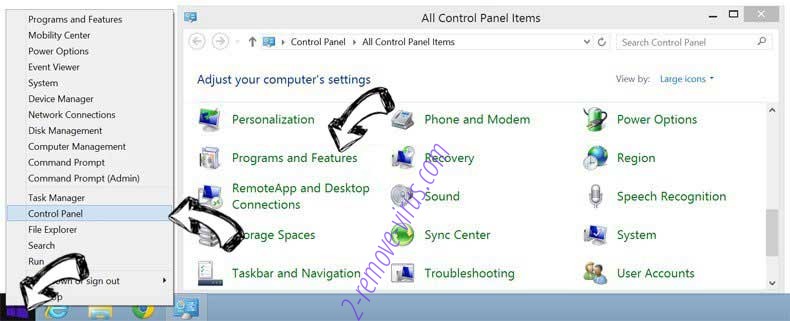

Uninstall UltraApplication adware (Mac) from Windows 7
Click Start → Control Panel → Programs and Features → Uninstall a program.
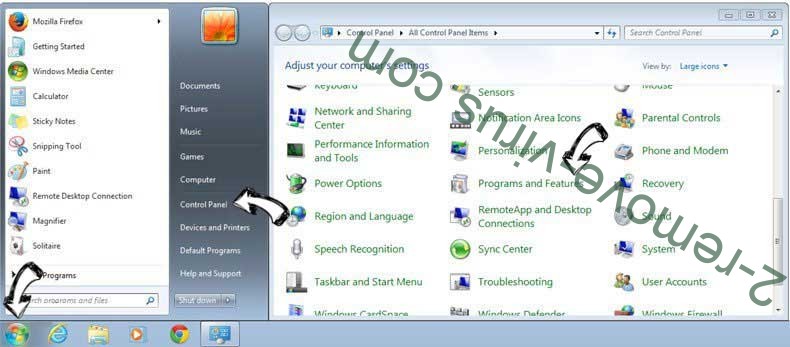

Delete UltraApplication adware (Mac) from Windows XP
Click Start → Settings → Control Panel. Locate and click → Add or Remove Programs.
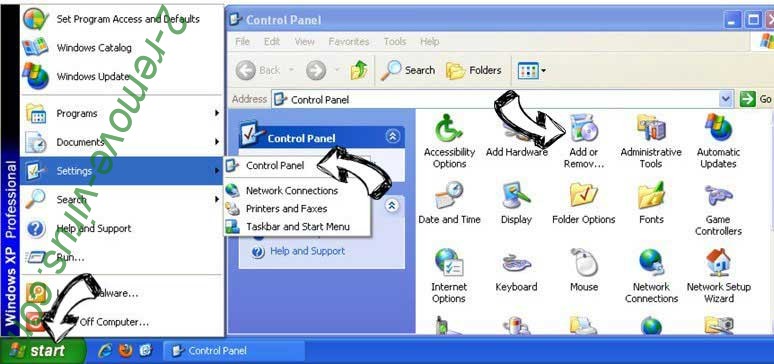

Remove UltraApplication adware (Mac) from Mac OS X
Click Go button at the top left of the screen and select Applications. Select applications folder and look for UltraApplication adware (Mac) or any other suspicious software. Now right click on every of such entries and select Move to Trash, then right click the Trash icon and select Empty Trash.
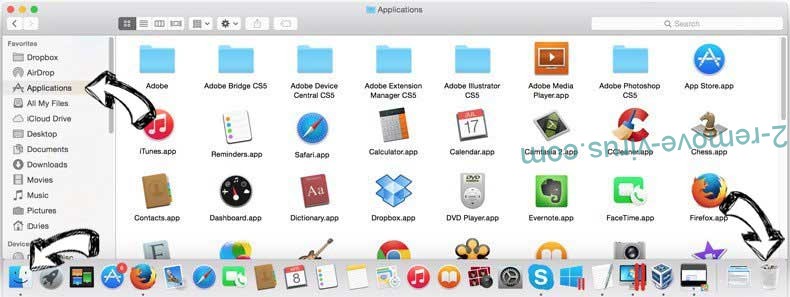

Step 2. Delete UltraApplication adware (Mac) from your browsers
Terminate the unwanted extensions from Internet Explorer
- Tap the Gear icon and go to Manage Add-ons.

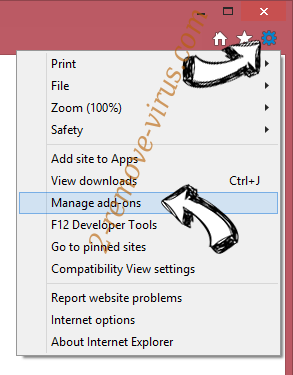
- Pick Toolbars and Extensions and eliminate all suspicious entries (other than Microsoft, Yahoo, Google, Oracle or Adobe)

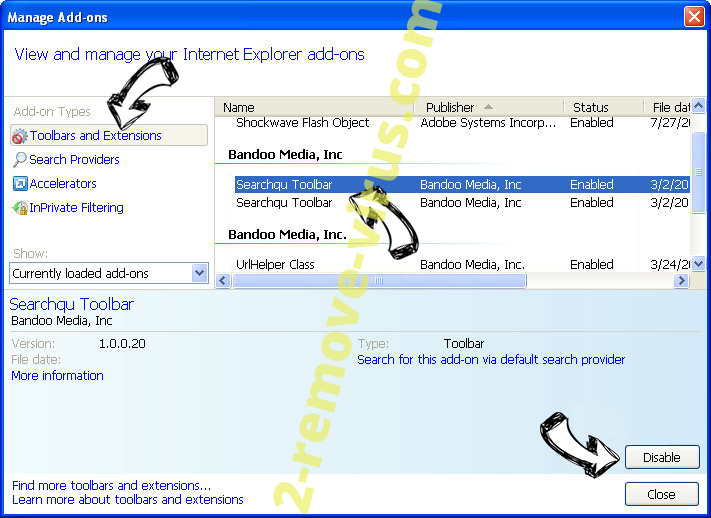
- Leave the window.
Change Internet Explorer homepage if it was changed by virus:
- Tap the gear icon (menu) on the top right corner of your browser and click Internet Options.

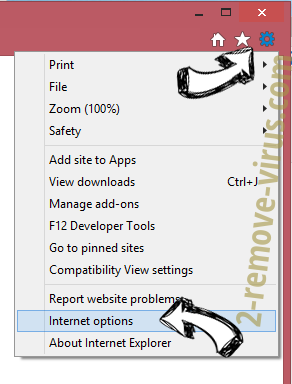
- In General Tab remove malicious URL and enter preferable domain name. Press Apply to save changes.

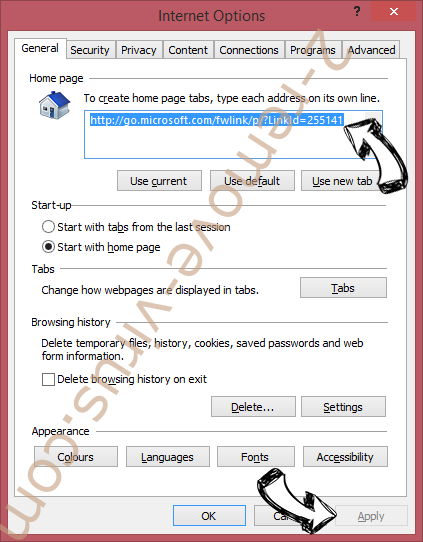
Reset your browser
- Click the Gear icon and move to Internet Options.

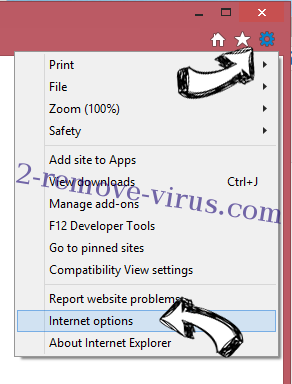
- Open the Advanced tab and press Reset.

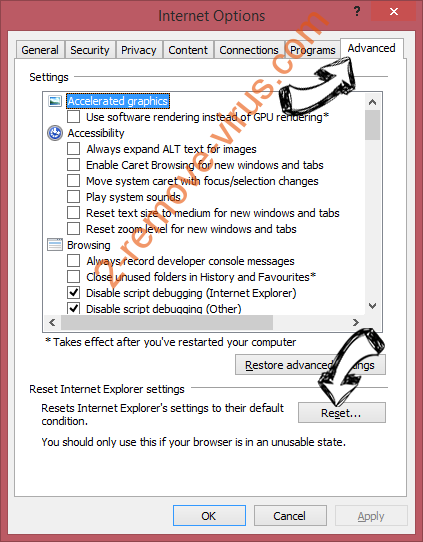
- Choose Delete personal settings and pick Reset one more time.

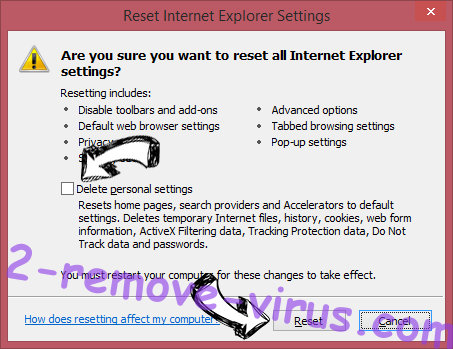
- Tap Close and leave your browser.

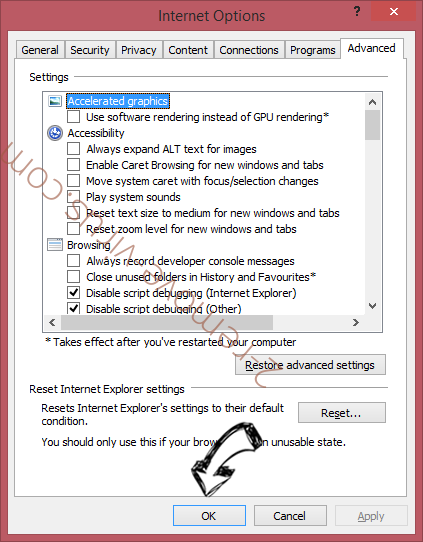
- If you were unable to reset your browsers, employ a reputable anti-malware and scan your entire computer with it.
Erase UltraApplication adware (Mac) from Google Chrome
- Access menu (top right corner of the window) and pick Settings.

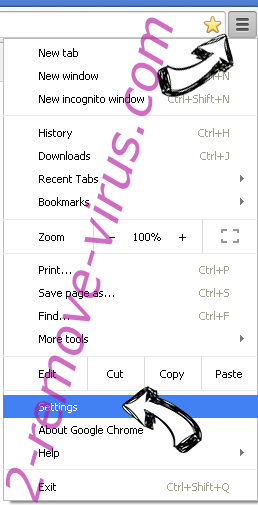
- Choose Extensions.

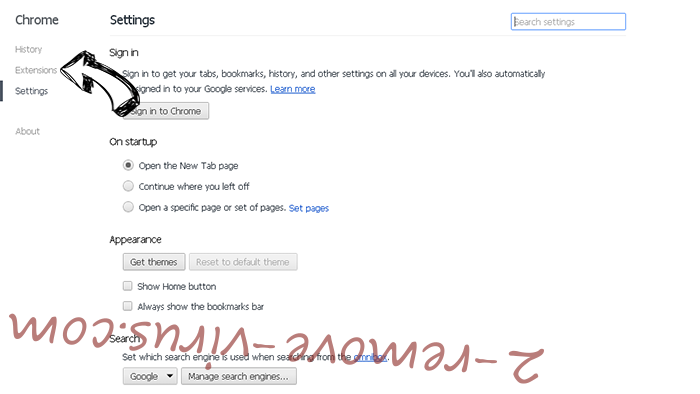
- Eliminate the suspicious extensions from the list by clicking the Trash bin next to them.

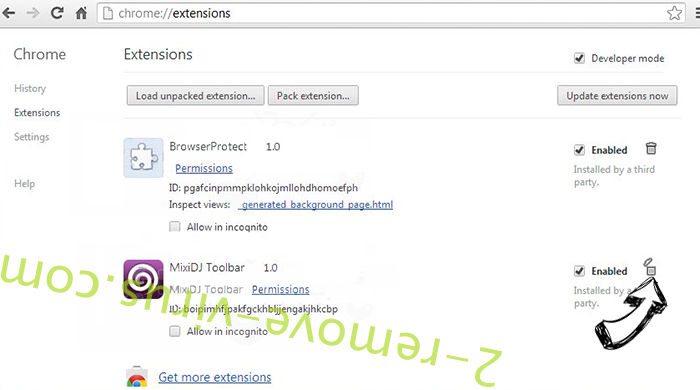
- If you are unsure which extensions to remove, you can disable them temporarily.

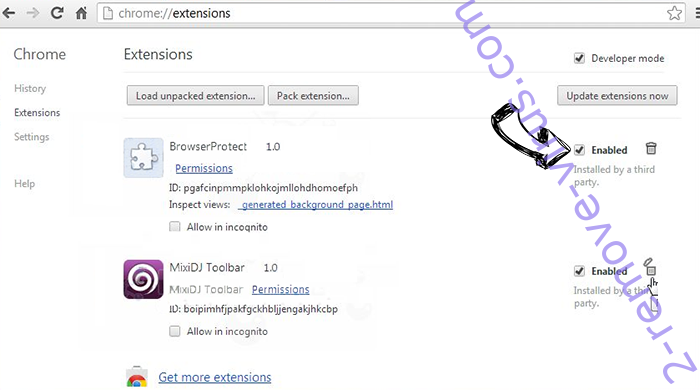
Reset Google Chrome homepage and default search engine if it was hijacker by virus
- Press on menu icon and click Settings.

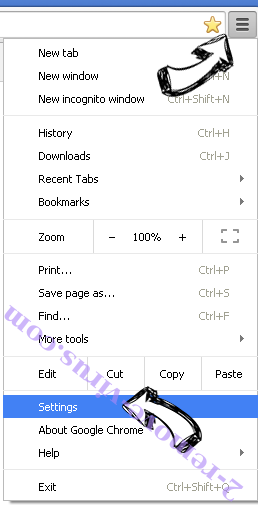
- Look for the “Open a specific page” or “Set Pages” under “On start up” option and click on Set pages.

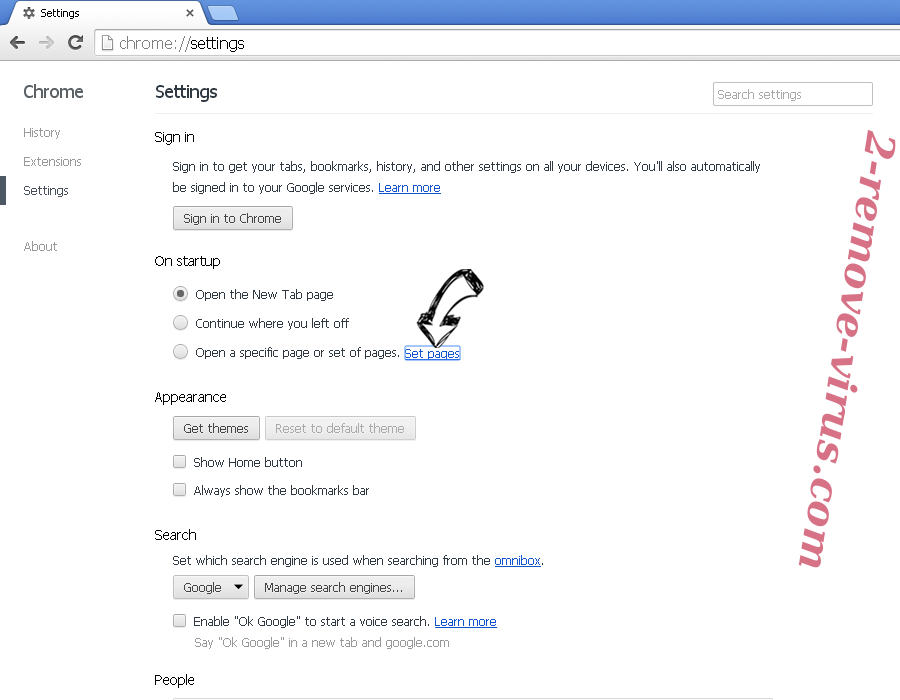
- In another window remove malicious search sites and enter the one that you want to use as your homepage.

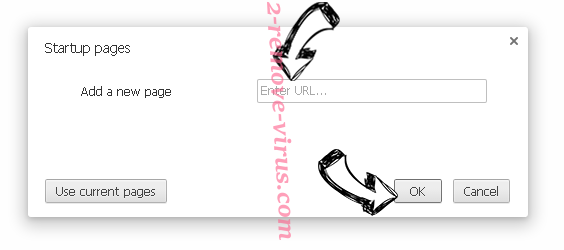
- Under the Search section choose Manage Search engines. When in Search Engines..., remove malicious search websites. You should leave only Google or your preferred search name.

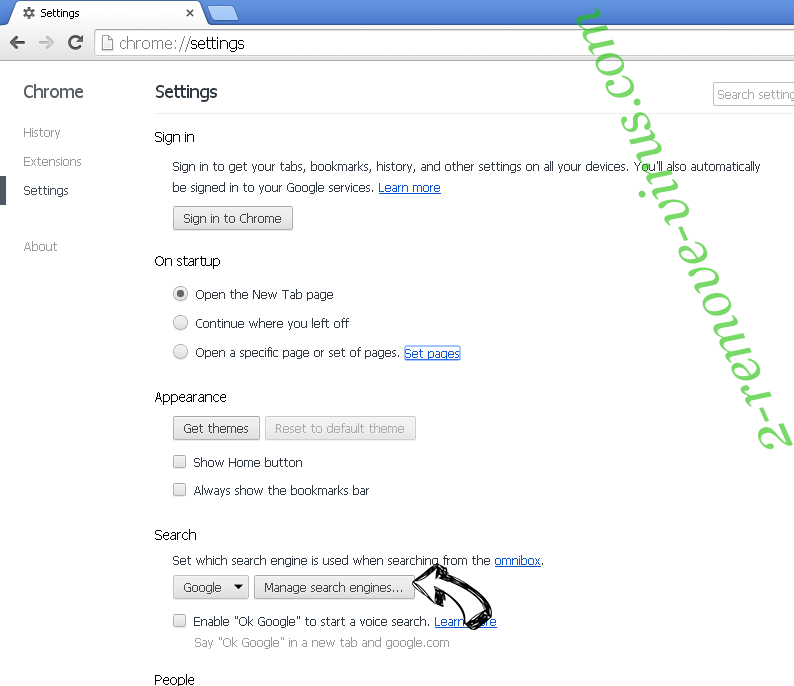

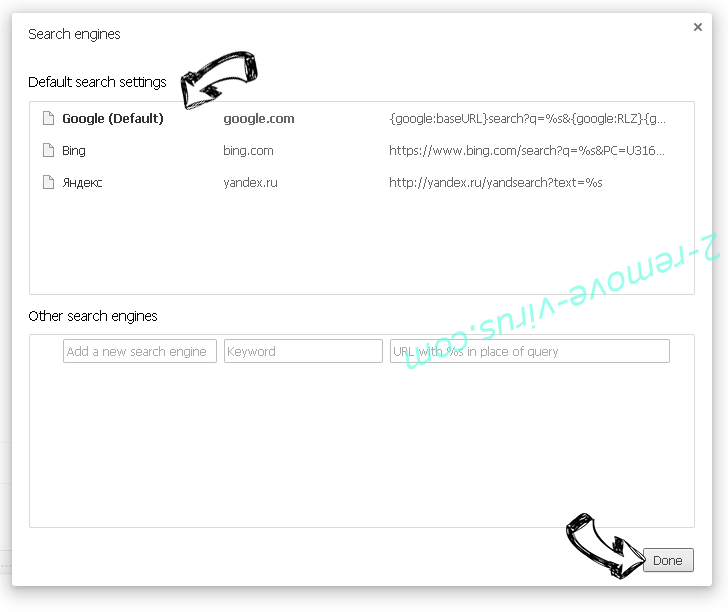
Reset your browser
- If the browser still does not work the way you prefer, you can reset its settings.
- Open menu and navigate to Settings.

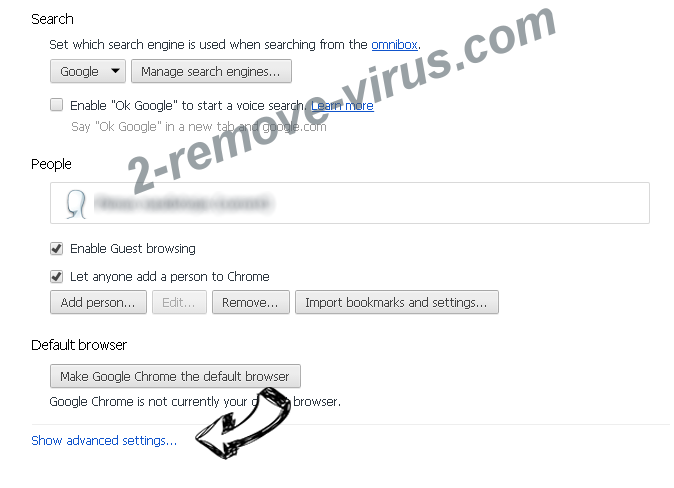
- Press Reset button at the end of the page.

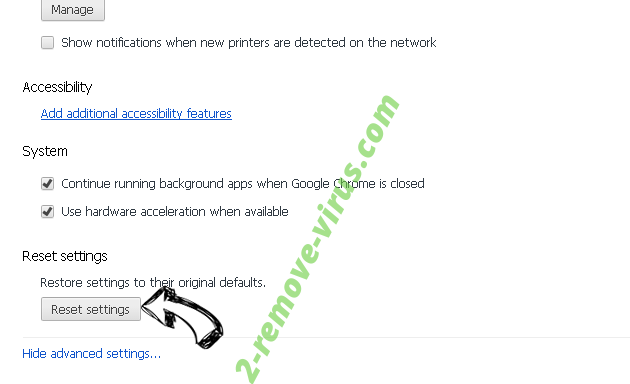
- Tap Reset button one more time in the confirmation box.

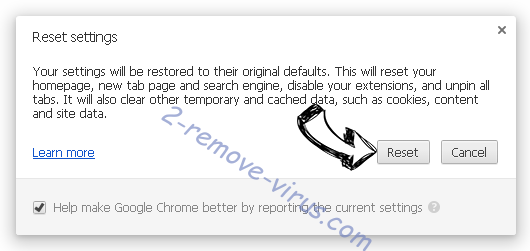
- If you cannot reset the settings, purchase a legitimate anti-malware and scan your PC.
Remove UltraApplication adware (Mac) from Mozilla Firefox
- In the top right corner of the screen, press menu and choose Add-ons (or tap Ctrl+Shift+A simultaneously).

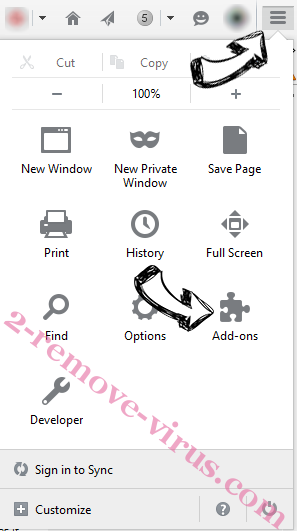
- Move to Extensions and Add-ons list and uninstall all suspicious and unknown entries.

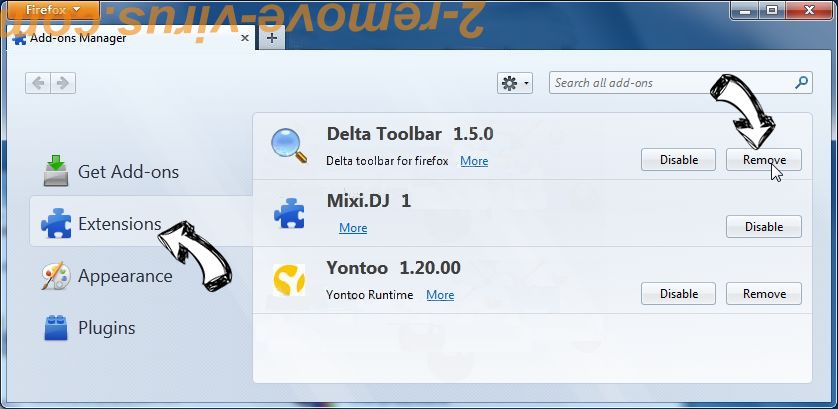
Change Mozilla Firefox homepage if it was changed by virus:
- Tap on the menu (top right corner), choose Options.

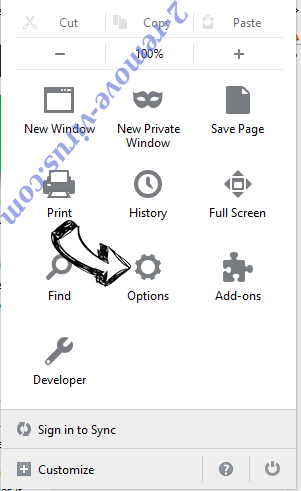
- On General tab delete malicious URL and enter preferable website or click Restore to default.

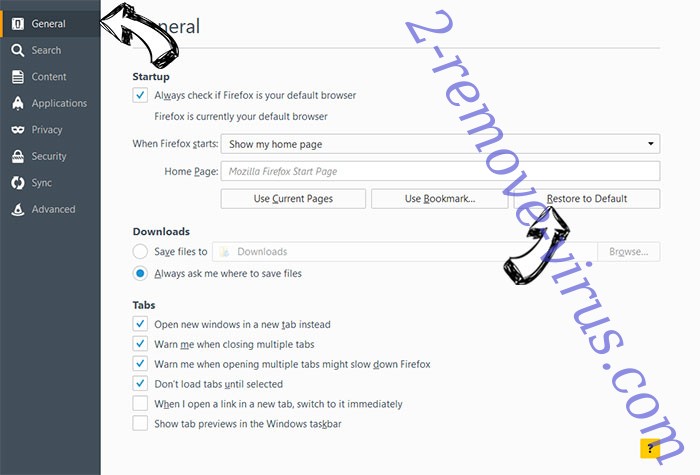
- Press OK to save these changes.
Reset your browser
- Open the menu and tap Help button.

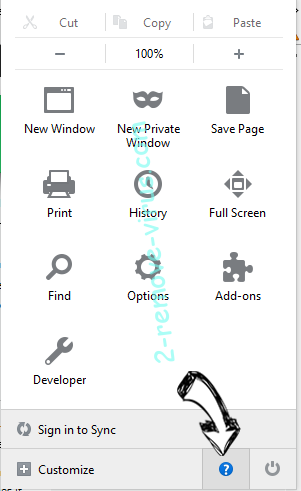
- Select Troubleshooting Information.

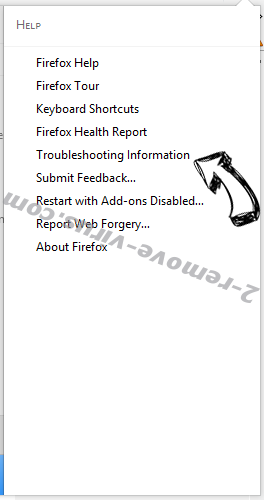
- Press Refresh Firefox.

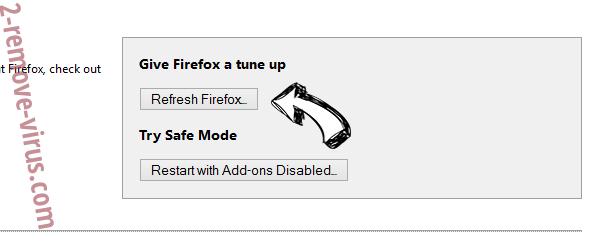
- In the confirmation box, click Refresh Firefox once more.

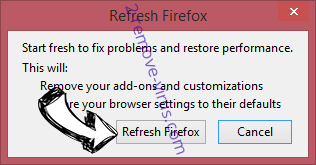
- If you are unable to reset Mozilla Firefox, scan your entire computer with a trustworthy anti-malware.
Uninstall UltraApplication adware (Mac) from Safari (Mac OS X)
- Access the menu.
- Pick Preferences.

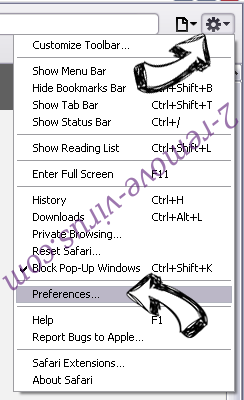
- Go to the Extensions Tab.

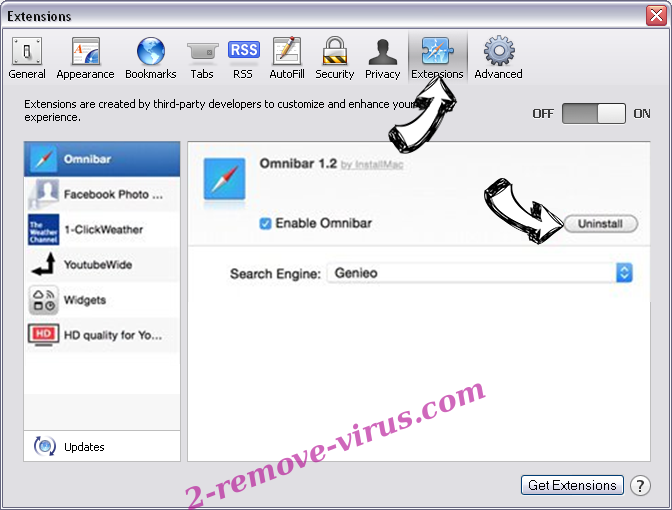
- Tap the Uninstall button next to the undesirable UltraApplication adware (Mac) and get rid of all the other unknown entries as well. If you are unsure whether the extension is reliable or not, simply uncheck the Enable box in order to disable it temporarily.
- Restart Safari.
Reset your browser
- Tap the menu icon and choose Reset Safari.

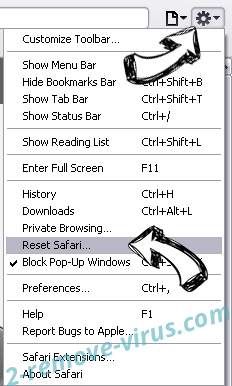
- Pick the options which you want to reset (often all of them are preselected) and press Reset.

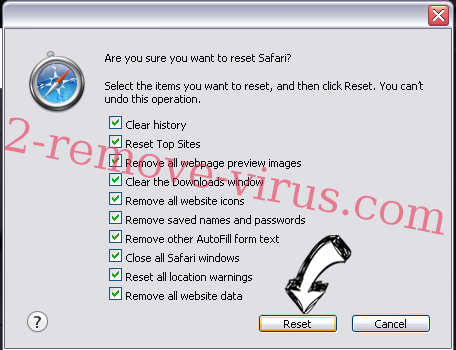
- If you cannot reset the browser, scan your whole PC with an authentic malware removal software.
Site Disclaimer
2-remove-virus.com is not sponsored, owned, affiliated, or linked to malware developers or distributors that are referenced in this article. The article does not promote or endorse any type of malware. We aim at providing useful information that will help computer users to detect and eliminate the unwanted malicious programs from their computers. This can be done manually by following the instructions presented in the article or automatically by implementing the suggested anti-malware tools.
The article is only meant to be used for educational purposes. If you follow the instructions given in the article, you agree to be contracted by the disclaimer. We do not guarantee that the artcile will present you with a solution that removes the malign threats completely. Malware changes constantly, which is why, in some cases, it may be difficult to clean the computer fully by using only the manual removal instructions.
